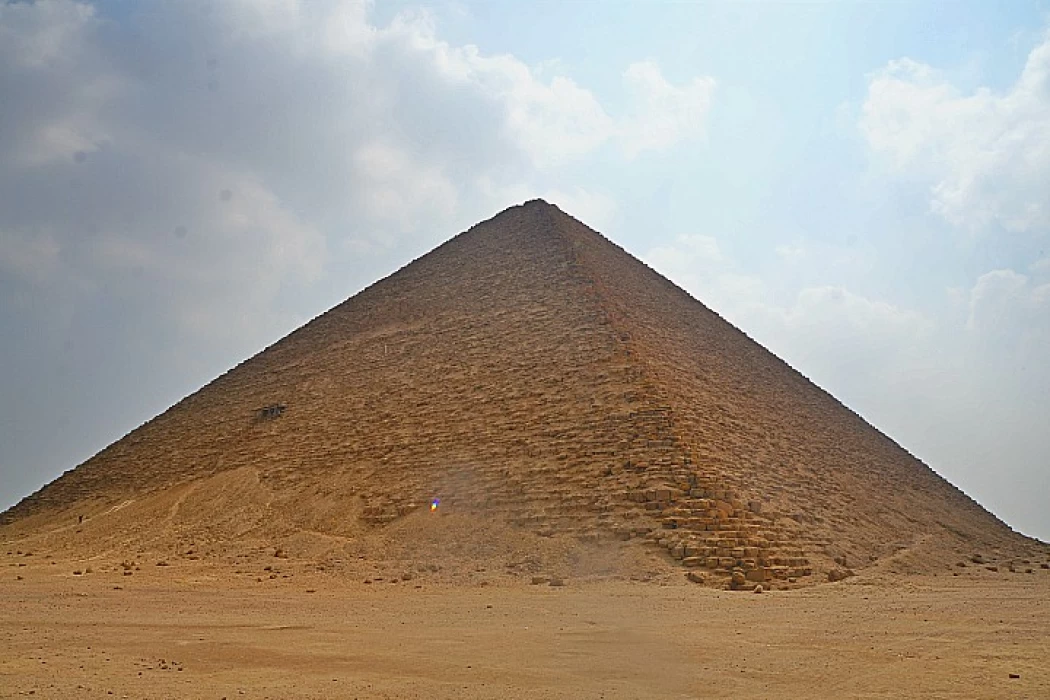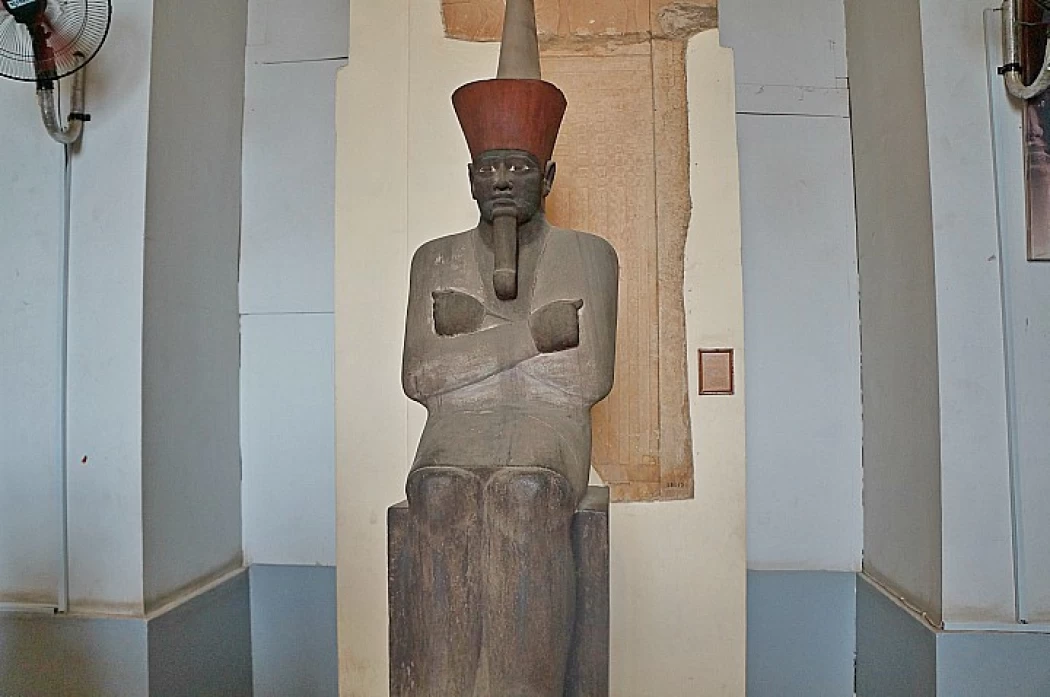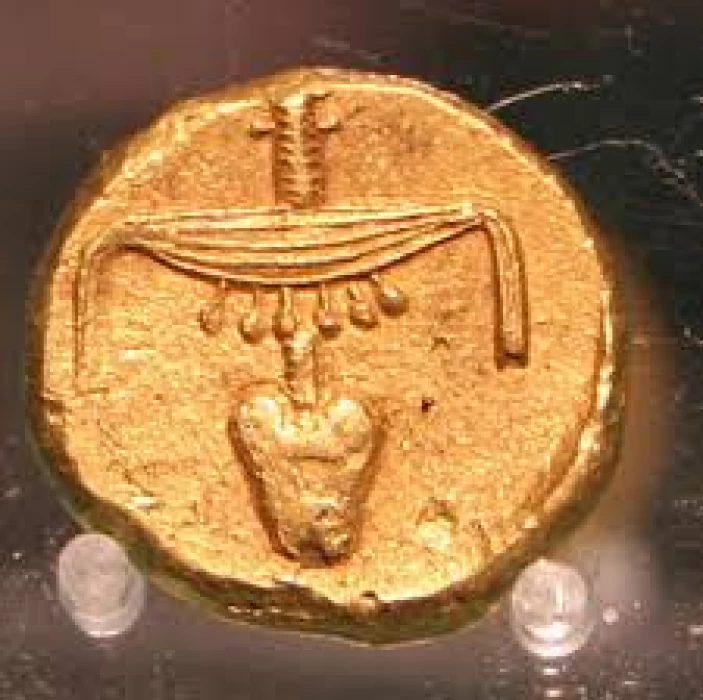Admin
Akhenaton was the pharaoh and religious reformer who ruled Egypt for seventeen years. His goal was to reshape the Egyptian religious landscape by centering worship around the solar disk, known as "Aton." In pursuit of this vision, he attempted to erase the names of the major Egyptian god "Amun" and his wife "Mut" from monuments and records throughout the empire.
Admin
Egypt During the Ptolemaic Era | Ptolemaic Dynasty
The Ptolemies were a Macedonian family that arrived in Egypt following Alexander the Great's death in 323 BC. Ptolemy I established himself as Egypt's pharaoh in 305 BC, marking the start of the Ptolemaic era.
Admin
1st Dynasty of Ancient Egypt History
The first Egyptian family to rule from 3200 BC to 3000 BC was known as the First Dynasty. It is also referred to as the ancient era's title together with the second Egyptian family. Menes was the first pharaoh, according to every source of Egyptian historiography.
Admin
The Fourth Dynasty of Ancient Egypt History
The fourth Egyptian dynasty, which spanned the period from 2575 B.C. to 2465 B.C., was succeeded by the fifth and sixth Egyptian dynasties, all hailing from the Ancient Empire. At that period, Memphis served as Egypt's capital, and King Senefru is credited with founding the fourth Egyptian dynasty.
Admin
The Fifth Dynasty of Ancient Egypt History
The fifth dynasty, which consisted of nine rulers and governed Egypt from 2465 to 2323 B.C., came after the fourth. Cairo Top Tours can tell you more about the history of the fifth dynasty in ancient Egypt!
Admin
The Seventh Dynasty of Ancient Egypt History
In Egyptian history, the seventh dynasty is renowned for its kings. The First Intermediate Period is defined as the seventh through tenth and eleventh families. Because the seventh and eighth dynasties were a time of great uncertainty in Egyptian history, hardly much is known about their monarchs.
Admin
The Eighth Dynasty of Ancient Egypt History
We discovered that the pharaohs of this line continued to be traditional during the Eighth Dynasty, referring to themselves by the names of their forebears in the majority of instances. As an illustration, of the kings of the Eighth Dynasty, we find that five of them went by the name "Nefer Ka Ra," one went by the name "Djedkara," and one went by the name "Nefer Er Kara."
Admin
The Ninth Dynasty of Ancient Egypt History
The general conditions did not differ much from the previous ones, and the new kings continued to ask the powerful rulers for help and kindness. We do not know anything about the conflict that likely occurred between the princes of Ahnasia and the later Eighth Dynasty kings at Memphis, nor do we know the position of the governors of the provinces of the new family when they were raised.
Admin
The Tenth Dynasty of Ancient Egypt History
We don't yet know why dynasty IX gave way to dynasty X, despite the fact that we can discern a certain kind of communication between them based on the names of their kings. The Egyptians also referred to them as the "Khatti dynasty". It is never ruled out that a reinterpretation of the Egyptian monarchy's origins contributed to the split of Heraclius' pharaohs into two families. In any case, the tenth family comprises fourteen pharaohs, the majority of whom are unidentified.
Admin
The French Expedition in Egypt
Charles Majalon, the French consul in Egypt, gave a report to his government on February 9, 1798 A.D., prior to the French campaign against Egypt, urging it to take Egypt and emphasizing the value of his country seizing Egyptian produce and trade. and listing the benefits that France is anticipated to receive from that.
Admin
Naqada period in ancient Egypt
The porcelain industry that spread during the era of the Naqada I began to disappear and began to appear plates, cups, and ornamental vases made with the mixed child. The formation of this substance was more difficult than the formation of the indigo child, but solid vessels suitable for preserving food for a long time are saved.
Admin
The Eleventh Dynasty of Ancient Egypt History
The eleventh family controlled Pharaonic Egypt from 2134 to 1991 B.C. It was the eleventh dynasty of the reigning families. The Middle Kingdom began with the reign of Entef, the first king of Thebes, and ended with the country's political unification. The Egyptian central authority was reunited after a protracted period of disarray, largely due to the efforts of the Theban rulers, of whom Mentuhotep II was the most significant.
Admin
The Twelfth Dynasty of the History of Ancient Egypt
This dynasty was founded by King Amenemhat I, who was the last minister of the eleventh dynasty, and this twelfth family has endured tremendous difficulties in imposing its control and legitimacy on the sons of the previous dynasty.
Admin
The Thirteenth Dynasty of the History of Ancient Egypt
Along with the eleventh, twelfth, and fourteenth dynasties, the thirteenth Egyptian dynasty was the first in its age to initiate the Hyksos invasion of Egypt. They were all based in the Middle Kingdom. This family's rule started during the time between 1790 BC and 1649 BC.
Admin
The Fourteenth Dynasty of Ancient Egypt
The Hyksos, the fourteenth dynasty, began in 1548 B.C., which initiated the era of the Second Middle Kingdom.
Admin
The Fifteenth Dynasty in Ancient Egypt
The first Huxusian family in Egyptian history, the 15th Dynasty, governed from Ejtawai without having complete control over Egypt. Instead, they chose to stay in northeastern Egypt, from where they had penetrated the country.
Admin
The Sixteenth Dynasty in Ancient Egypt
During the XIII dynasty, Egypt lost control of Nubia and the residents moved from Etj-Tawi to Thebes.
Admin
The Eighteenth Dynasty in Ancient Egypt
The 18th Egyptian dynasty is an ancient pharaonic family that ruled Egypt in the period (1550 BC - 1292 BC), in the modern state of ancient Egypt. And it is considered one of the most famous and strongest Egyptian families in history. This dynasty is also known as the Thutmose dynasty, after the four pharaohs who were named Thutmose.
Admin
The Nineteenth Dynasty in Ancient Egypt
The pharaoh Ramses I, who established the XIX dynasty, served Horemheb, under whom he held the post of vizier. Long before he passed away, these two had chosen him to be their heir to handle the customary issues surrounding the succession.
Admin
The Twenty-first Dynasty in Ancient Egypt
Following Ramses XI's demise, there was a time when the Pharaonic throne remained empty and the Grand Priest of Amon grew in authority in the south.
Admin
The Twenty-Second Dynasty in Ancient Egypt
A lengthy inscription found at Abido, written when the king was still "the great leader of the Meshwesh, prince of princes," provides the earliest information on this monarch. After his father Nemrat, the son of a woman named Mehetemwaskhe, passed away, Sheshonq went to the then-ruler to ask for permission to build a large funeral cult in Abydos in his honor.
Admin
The Twenty-third Dynasty in Ancient Egypt
33rd Dynasty (828–712 BC). It comprised a collection of modern rulers (dating disputedly) who governed in various territories toward the close of the XXII dynasty.
Admin
The Twenty-Fourth Dynasty in Ancient Egypt
Around 730 B.C., the local monarch Tefnakht started to restore the unity of the nation surrounding him at Sais, in the delta. Rather than using force to conquer, it appears that he used persuasion to gain the respect of the local kings, who he confirmed as his vassals.
Admin
The 25th Dynasty in Ancient Egypt
Strange as it may seem, Manetho did not mention this legendary warrior from Sudan or the Cushite people until approximately 730 B.C., when events in Egypt abruptly changed dramatically. Piankhy was the brother of Shabaka, also known as Sabacon in Manetho, and the son of Kashta, a chieftain or monarch.
Admin
The 26th Dynasty in Ancient Egypt
Following their conquest, the Babylonians installed trusted governors in charge of the Egyptian cities. With Esarhaddon, the system of swapping out wicked kings for others of their choosing had been launched.
Admin
The 27th Dynasty in Ancient Egypt
For the brief three years that he ruled over Egypt, Cambyses made multiple unsuccessful attempts to expand and fortify his borders. The Phoenicians hesitated to fight against members of their own race, therefore the plan of war against Carthage was shelved.
Admin
The 28th Dynasty in Ancient Egypt
A later Egyptian tradition holds that the son was not allowed to succeed his father because Amirteos had somehow disobeyed the law. Manetho claims that Amirteos ruled for six years, which is most likely true given that a fifth-year pledge to settle a debt is seen in the Aramaic Elephantine papyrus.
Admin
The 29th Dynasty of Ancient Egypt
One of the most well-known dynasties in Egyptian history is the XXVII Dynasty. At first, Nefretes I founded it. by slaying Amirtaeus at Memphis after defeating him in a public battle. At Mendes, Nefertiti captured his capital.
Admin
The 30th dynasty of Ancient Egypt
Nekhtnebef was the first pharaoh of the 30th dynasty, though the succession order has frequently been disputed. This monarch may have left behind a large number of monuments that suggest an era of unbroken peace and prosperity. He is the author of the oldest sections of Philae.
Admin
Ancient Egyptian Civilization
Egypt is regarded as the land of civilizations from the beginning of time because civilizations were founded there on the banks of the Nile River, which is revered by both ancient and modern Egyptians as a symbol of stability and fertility. The ancient Egyptian civilizations predate Christ by more than 5500 years. The ancient Egyptian civilization started when King Narmer, also known as Minis, united these two kingdoms under his authority.
Admin
Ancient Egyptian Social Structure
Ancient Egypt's social and organizational structure was arranged into hierarchical levels, with the monarch at the top. The top of Ancient Egypt's political-social structure was the pharaoh. The pharaoh, who inherited his position at the top of the hierarchical power structure, is the ultimate ruler in the state system.
Admin
The Economy in Ancient Egypt
Because the area in the Nile valley is so fertile, agriculture has always been the main industry in Egypt. Because of its exceptional agricultural output, temples and pyramids were built with the money earned from farming.
Admin
Science in Ancient Egypt
The agricultural system of ancient Egypt is connected to its science. The ancient Egyptians created a calendar that divided the year into 365 days in order to control the development of rich land along the flow of the Nile, favoring astronomical study.
Admin
Astronomy in Ancient Egypt
Astronomy was significant to the Egyptian way of life. The ancient Egyptians were able to anticipate the Nile River's floods and plan agricultural activities by using the celestial vault to create the earliest calendars and sundials.
Admin
Writing in Ancient Egypt
Published around 3100 BC, hieroglyphic script was used. They are graven, sacred symbols that bear the gods' utterances and convey the sounds, meanings, and symbols of the drawings they speak.
Admin
Ancient Egyptian Language
Text messages were not sent with pyramids. However, a block of the pyramid presented by King Pepi I in 1880 alarmed the new Gaston Maspero, who convinces Mariette to uncover the remains of another pyramid, the Kings of Mererer, at the end of December. Then there came a fantastic discovery: the walls were covered in Egyptian hieroglyphic columns.
Admin
The Rosetta Stone: Key to Ancient Egypt
The Rosetta Stone, discovered in 1799 by French soldiers in Rosetta, Egypt, was instrumental in deciphering hieroglyphics. It contained a decree in Greek, Demotic, and hieroglyphic scripts, enabling scholars like Jean-François Champollion to understand ancient Egyptian language and culture. Today, it is housed in the British Museum and remains a symbol of linguistic and archaeological advancement.
Admin
Egypt's Pharaonic History
The Pharaonic Era, also known as Ancient Egypt, spanned over 3,000 years and was ruled by pharaohs from 3100 BCE to 332 BCE. It was characterized by significant achievements in architecture, art, governance, and religious beliefs, such as the Pyramids of Giza and the Sphinx. The era also saw advancements in writing, mathematics, and medicine. Despite its end with Alexander the Great's conquest, its cultural legacy continues to fascinate the world today.
Admin
The Feast of The Hep Sed, the Feast of Rejuvenation
The Hep Sed Festival, also known as the Sed Festival, was an ancient Egyptian celebration to reaffirm the pharaoh's divine kingship. It took place after a 30-year reign and featured ceremonies, rituals, races, dances, and offerings to the gods. The festival symbolized the pharaoh's vitality and connection to the divine, reaffirming the stability and continuity of the kingdom.
Admin
First Intermediate period | Egyptian history
The First Intermediate Period of Ancient Egypt (c. 2181-2055 BCE) was marked by political fragmentation and social upheaval, following the collapse of centralized authority. This period saw the rise of regional rulers, nomarchs, and a decline in monumental building and artistic production. The division between Upper and Lower Egypt intensified, and various dynasties vied for power. The period marked the reunification of Egypt under the Middle Kingdom.
Admin
Arab Islamic Invasion of Egypt
During the reign of Caliph Omar ibn al-Khattab, the Arab Muslim commander Amr ibn al-As annexed Egypt to the Islamic Caliphate in what is known as the Islamic conquest of Egypt after he completed the annexation of Palestine from the hands of the Romans and aimed to secure the conquests. Caliph Omar ibn al-Khattab feared Islamic armies entering Africa, but commander Amr ibn al-As, fond of Egypt before Islam, invaded after winning the Battle of Ajnadin.
Admin
Egypt under the rule of foreigners
Egypt has not been a land of luxury or happiness for its owners, especially in recent history, since it has been dominated by several foreign rulers from Alexander the Great to the freedom from occupation. President Gamal Abdel Nasser, King Farouk, Khedive Ismail, Muhammad Ali, and Abbas Helmi I are notable individuals who have all faced unsubstantiated accusations of poisoning, exile, assassination, or mental illness.
Admin
Women of Power and Influence in Ancient Egypt
In ancient Egypt, women were considered equals to men, unlike the Greeks and Romans of antiquity. Despite being patriarchal and hierarchical, ancient Egypt allowed women to live their own lives in various areas. With a thriving economy, the country provided for the well-being and dignity of its subjects, including women, on an equal footing, more so than in other ancient civilizations.
Admin
Priests of ancient Egypt
Geoffrey A. O'Rourke, a cultural anthropologist, explains that civilizations are often shaped by their belief systems, particularly in ancient Egypt. Priests, who often practice a religion, are often at the helm of a culture's way of life, transcending normal perceptions of devotion. In ancient Egypt, this attitude was primarily influenced by sociocultural influences, viewing individuals as instruments of god's will. This highlights the importance of understanding the complexities of religious beliefs in shaping societies.
Admin
June 30 revolution Egypt-Tahrir Square
The June 30, 2013 revolution in Egypt marked a significant shift in Egyptian history, paving the way for a new path of national action under President Abdel Fattah al-Sisi. This revolution, based on popular cohesion and national alignment, aimed to confront the terrorist Brotherhood's challenges and prevent Egypt from becoming an emirate subordinate to foreign plans.


























































